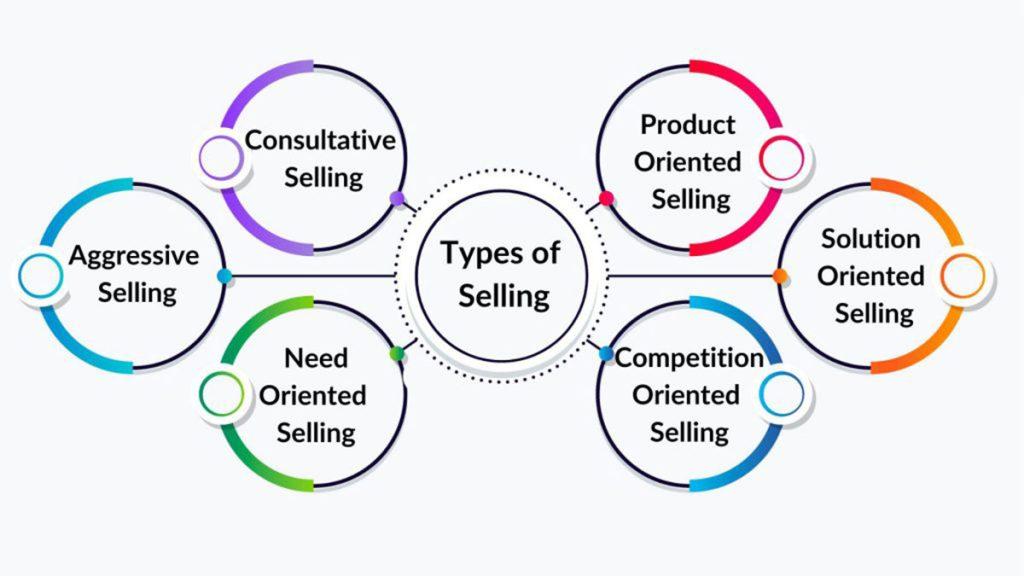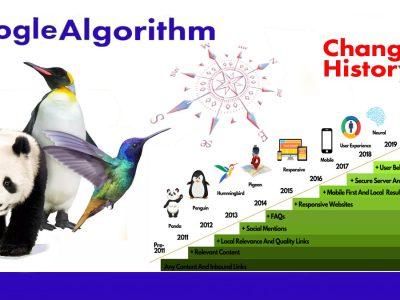Published on 04/08/2024 – Last Updated on 04/08/2024 by OTC
The difference between Selling and Marketing is associated with the roles and responsibilities of sales and marketing teams.
Selling focuses on the process of getting a customer to purchase a product or service, whereas Marketing is about understanding the target market and creating strategies to reach them.
At the most basic level, selling is about getting customers to buy a product or service. Marketing, on the other hand, is more focused on building a relationship with customers by understanding their needs and providing them with an appropriate solution.
- The Sales Department is responsible for managing the customer relationship from initial contact to purchase. This includes activities such as prospecting, cold calling, setting up appointments, and closing deals. They are tasked with creating value for the customer and ensuring that they have a positive experience throughout the sales process.
- Marketing focuses on understanding the market and target audiences, then developing strategies to reach them. It involves activities such as market research, competitor analysis, content creation, and advertising. The marketing process is responsible for creating brand awareness and building relationships with potential customers.
Selling vs Marketing
Definition
- Selling is a business idea that emphasizes the importance of actively engaging with both consumers and businesses in order to achieve a successful sale of a product or service.
- The marketing concept is the use of strategies and plans to achieve business goals by improving their products and satisfying customers better than their competitors.
The Origin concept
- The selling process begins with the creation and design of the product at the factory.
- The marketing concept begins with identifying the target market. Marketers need to conduct thorough research on market conditions and product demand to gain knowledge.
Focus
- The selling concept primarily focuses on the product, its price, distribution, and customer purchase to increase overall sales. Its main goal is to maximize sales.
- The primary focus of the marketing concept is to meet the needs of customers. Marketing strategies such as building brand awareness, generating interest, promoting, and selling products are all created to achieve the highest level of customer satisfaction.
Perspective
- The selling concept adopts the inside-out approach.
- The outside-in approach embodies the marketing concept.
Business Planning
- You need to make short-term plans to either influence customer purchases in a competitive market or to address the issue of excess production in our organization.
- Marketing is a time-consuming process that involves developing strategies for product positioning, building brand awareness, and cultivating customer loyalty over the long term.
Orientation
- Selling is Volume-oriented.
- Marketing is Profit-oriented
Means of implementation
- Selling involves making direct contact with potential customers in order to win their business. It includes activities such as advertising, personal selling, and pricing strategy.
- Marketing is focused on creating customer relationships by using a variety of techniques such as product/service design, distribution, promotion and pricing. It also aims at gaining market share and building brand recognition.
Price
- Product prices depend on the overall cost of production.
- Various factors, such as supply and demand, influence the pricing of products, which is ultimately determined by the market.
What is Selling?
Selling is a process that entails various activities, such as prospecting, cold calling, setting up appointments, and closing deals. The sales team focuses on creating value for customers by helping them find the right product or service to meet their needs. They develop relationships with customers and strive to provide excellent customer service throughout the entire sales process.
The sales department exclusively offers the products produced by the production department and employs an assertive sales approach that disregards the customer’s true needs and satisfaction.
Selling refers to the exchange of goods or services for payment between a seller and one or more buyers. To achieve success in selling, one must acquire effective skills. These skills include communication, persuasion, negotiation, and networking. Ultimately, the goal of selling is to close a sale and generate revenue for the business.
The top six selling strategies
- Aggressive Selling– This type of selling focuses on persuading customers to buy by creating urgency and a sense of scarcity. For example, offering discounts and limited-time offers.
- Consultative Selling– This approach involves providing advice and tailored solutions to customers’ needs. This selling approach focuses on establishing a trustworthy relationship with customers. A sales representative’s main objective is to establish a relationship with their client, rather than just making a sale.
- Need-Oriented Selling– This selling style focuses on pinpointing customer needs and helping them find the best product or service to meet their needs. Need-oriented selling emphasizes developing an understanding of the customer’s needs before recommending a product or service.
- Product-Oriented Selling– This selling style focuses on the features of a product or service, and often involves demonstrating its use. Product-oriented selling is typically used for more complex and technical offerings.
- Solution-Oriented Selling– This selling approach involves providing tailored solutions to customer needs. The emphasis here is on presenting a solution that meets the customer’s needs, rather than just a product or service.
- Competition-Oriented Selling– This selling style focuses on competing with other brands and businesses. It involves analyzing competitors’ offerings to identify areas where your product can stand out and be more attractive to potential customers.
What is Marketing?
Marketing focuses on understanding the target market and creating strategies to reach them. Marketing is the effort made by companies to promote their goods or services. It is an important component of companies’ strategic plans and involves various activities to achieve their marketing goals.
Marketing has become a crucial aspect of a business, encompassing distribution, promotion, design, material creation, and customer experience enhancement. The goal of marketing is to have a lasting impact, while the goal of selling is to complete transactions quickly. Marketing can have immediate and long-lasting effects on the business, whereas sales typically have an immediate impact.
The activity of marketing is crucial for any company as it involves identifying the needs of consumers, fulfilling those needs, and ultimately receiving feedback from the customers. The marketing concept relies on 4 factors: integrated marketing, target audience, customer profitability, and customer needs. It begins with identifying the specific market, prioritizing consumer needs, managing customer interactions, and ultimately achieving profit by satisfying customers.
Marketing involves a range of methods and activities used to attract, engage, convert, and retain customers.
Some of the types of marketing
- Relationship Marketing– Relationship marketing is about creating a bond between a business and its customers by focusing on customer service, loyalty programs, referrals, and other activities that build relationships.
- Digital Marketing– Digital marketing involves the use of digital channels and mediums to promote a product or service, such as email marketing, social media, search engine optimization (SEO), and online advertising.
- Word of Mouth Marketing– Word-of-mouth marketing is a form of earned media, where customers talk about and promote products or services to their friends, family, and other contacts. It’s one of the most effective forms of marketing since it is based on trust and personal recommendations.
- Paid Advertising– Paid advertising is a type of marketing that uses paid placement, such as pay-per-click (PPC) or display ads, to reach potential customers.
- Cause Marketing– Cause marketing is a form of marketing that helps to promote a business while also raising awareness and funds for a cause or charity.
Examples of Selling – Some examples of sales techniques include:
- B2B sales
- Door-to-door sales
- Cold-calling
- Networking
- Upselling
- Cross-selling
- Personal selling
Examples of Marketing Here are some examples of marketing:
- Digital Marketing
- Public Relations
- Content Marketing
- Advertising campaigns
- Inbound Marketing
- Traditional Marketing
- Product placements
Why is Marketing Important?
Marketing is a key component in driving sales and profits for any business. Here are some of the reasons why marketing is important
- Increased Awareness – Marketing is important in creating brand awareness, as it allows businesses to reach potential customers through various forms of media and advertising.
- Tailored Messaging – Marketing also allows businesses to craft tailored messages to their target audiences which can help them better understand and connect with the product or service being offered.
- Increased Reach – Through marketing, businesses are able to reach an even wider audience than they could through selling alone, thus increasing their potential customer base and bottom line.
- Enhanced Customer Relationships – Marketing also allows businesses to maintain strong relationships with their customers by providing them with relevant and engaging content, which can help foster loyalty.
How do Selling and Marketing Align?
Marketing can be seen as the ‘bigger picture’ while selling is part of that bigger picture. When marketing is done correctly, it sets up a plan and a direction, which makes it easier for sales team members to promote and sell the product or service in question.
The overall goal of marketing and selling is to successful brand creation, revenue generation, retaining customers, and optimizing conversions. To do this, it’s important for the two functions to align with each other in order to maximize profits. Such alignment includes:
- Sharing customer insights – Marketers should provide sales teams with the right information and tools to understand customers better, which can be used when promoting and selling a product or service. When a salesperson sells as per the customer’s feedback shared by the marketing team, it optimizes the success rate for any business.
- Creating an effective communication system – In order to facilitate collaboration, it’s important for marketing and selling teams to have excellent communication skills and systems in place. Whether you run a new business or an established one, effective communication helps in widening reach, generating leads, and boosting sales.
- Utilizing a joint strategy – A joint strategy helps marketers and sellers identify and target potential customers more effectively. It also ensures that the right message is delivered to potential customers at the right time. It is inevitable for the effective implementation of a business plan.
Read Also:
The Customer First Concept: Strategies To Lead Your Marketing Campaigns
















Comments